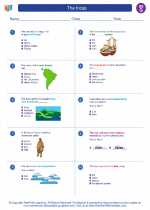Maryland: A Brief Overview
Maryland is a state located in the Mid-Atlantic region of the United States. It is known for its diverse geography, rich history, and significant contributions to the nation's development. Let's explore some key aspects of Maryland's history, geography, economy, and culture.
History of Maryland
Maryland was founded in 1632 as a proprietary colony by Cecilius Calvert, the second Lord Baltimore. The colony was established as a haven for English Catholics and was named in honor of Queen Henrietta Maria, the wife of King Charles I. Maryland played a pivotal role in the early development of the United States, particularly in the establishment of religious freedom through the Maryland Toleration Act of 1649.
Geography of Maryland
Maryland's geography is diverse, featuring coastal plains, the Chesapeake Bay, and the Appalachian Mountains in the western region. The state is also home to numerous rivers, including the Potomac and Patapsco rivers. Maryland's location along the Atlantic coast has influenced its economy and culture, particularly in the areas of shipping, fishing, and tourism.
Economy of Maryland
Maryland has a diverse and robust economy, with key industries including biotechnology, aerospace, manufacturing, and information technology. The state is home to several major government agencies and research institutions, as well as a thriving port in Baltimore. Agriculture, particularly the production of seafood and poultry, also plays a significant role in Maryland's economy.
Culture of Maryland
Maryland's culture is influenced by its unique history and diverse population. The state is known for its rich tradition of seafood cuisine, including crab cakes and Maryland blue crabs. Additionally, Maryland is home to several historical sites, museums, and cultural events that celebrate its heritage and contributions to American society.
Study Guide: Key Points to Remember
- What was the primary reason for the founding of Maryland as a colony?
- Describe the geographic features of Maryland and their impact on the state's economy.
- Identify two key industries that contribute to Maryland's economy today.
- Discuss the significance of the Maryland Toleration Act of 1649 in the context of American history.
- What cultural aspects make Maryland unique compared to other states?
[Maryland] Related Worksheets and Study Guides:
.◂Social Studies Worksheets and Study Guides Seventh Grade. The Incas

 Worksheet/Answer key
Worksheet/Answer key
 Worksheet/Answer key
Worksheet/Answer key
 Worksheet/Answer key
Worksheet/Answer key
